Tent condensation
Forum rules
TIP: The online Bushwalk Inventory System can help bushwalkers with a variety of bushwalk planning tasks, including: Manage which items they take bushwalking so that they do not forget anything they might need, plan meals for their walks, and automatically compile food/fuel shopping lists (lists of consumables) required to make and cook the meals for each walk. It is particularly useful for planning for groups who share food or other items, but is also useful for individual walkers.
TIP: The online Bushwalk Inventory System can help bushwalkers with a variety of bushwalk planning tasks, including: Manage which items they take bushwalking so that they do not forget anything they might need, plan meals for their walks, and automatically compile food/fuel shopping lists (lists of consumables) required to make and cook the meals for each walk. It is particularly useful for planning for groups who share food or other items, but is also useful for individual walkers.
30 posts
• Page 1 of 1
Tent condensation
Tents suffer from condensation. How is condensation minimised? Most tents have a gap between the fly and the ground, and air can circulate, more so on windy nights. Would a high or side vent assist, leaving the door open, stopping breathing while asleep?
-
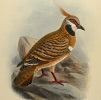
Lophophaps - Auctorita modica

- Posts: 3382
- Joined: Wed 09 Nov, 2011 9:45 am
- Region: Victoria
- Gender: Male
Re: Tent condensation
If you have a non-permeable floor, stopping breathing would work best.
High-low ventilation is best, and only improves with wind.
Leaving the door open can sometimes help, but only if your fly still overhangs the inner.
High-low ventilation is best, and only improves with wind.
Leaving the door open can sometimes help, but only if your fly still overhangs the inner.
Last edited by icefest on Fri 31 Oct, 2014 7:31 pm, edited 1 time in total.
Men wanted for hazardous journey. Low wages, bitter cold, long hours of complete darkness. Safe return doubtful.
-

icefest - Lagarostrobos franklinii

- Posts: 4479
- Joined: Fri 27 May, 2011 11:19 pm
- Location: www.canyoninginvictoria.org
- Region: Victoria
Re: Tent condensation
You either increase air flow or get a hot tent (one with a built in stove...)
To give you a specific example on two nights by Federation Hut (Mt Feathertop), the first I had a LOT of condensation inside the tent , the second almost none.
Same tent , pretty much the same temperature and conditions.
What happened the first night was that I forgot to open the top vents (they seal shut in transport) and also to open up the bottom vents.
Not visible in this shot taken after the first night, but the underside of the fly is wet with drips forming on a good part of the top area:
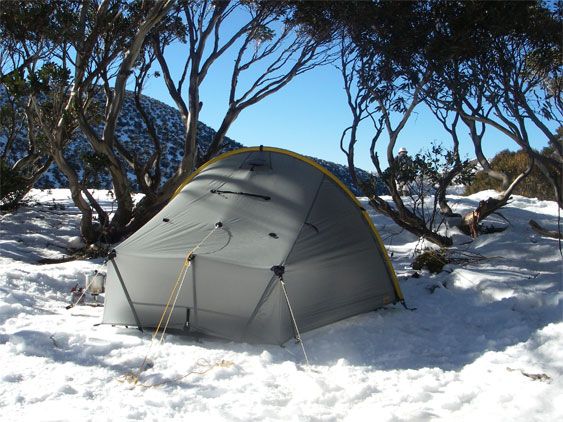
however you can see the vents still shut.
(I pull the tent taut just before I go to sleep and that is why it isn't sagging)
Most times there is some (or a lot) of wind up there but not so much on those two nights.
BTW, the first morning my sleeping bag was damp too (from condensation, not from rubbing against the walls) that dried up in about an hour after I opened a door panel (with me still inside the bag ) .
To give you a specific example on two nights by Federation Hut (Mt Feathertop), the first I had a LOT of condensation inside the tent , the second almost none.
Same tent , pretty much the same temperature and conditions.
What happened the first night was that I forgot to open the top vents (they seal shut in transport) and also to open up the bottom vents.
Not visible in this shot taken after the first night, but the underside of the fly is wet with drips forming on a good part of the top area:

however you can see the vents still shut.
(I pull the tent taut just before I go to sleep and that is why it isn't sagging)
Most times there is some (or a lot) of wind up there but not so much on those two nights.
BTW, the first morning my sleeping bag was damp too (from condensation, not from rubbing against the walls) that dried up in about an hour after I opened a door panel (with me still inside the bag ) .
- Franco
- Lagarostrobos franklinii

- Posts: 2958
- Joined: Thu 30 Oct, 2008 6:48 pm
- Region: Victoria
- Gender: Male
Re: Tent condensation
Condensation will not be noticed if you stop breathing while asleep.  Actually nothing more will be noticed.
Actually nothing more will be noticed.
"Perfection is attained not when there is nothing more to add, but when there is nothing more to remove".
-

Mark F - Lagarostrobos franklinii

- Posts: 2332
- Joined: Mon 19 Sep, 2011 8:14 pm
- Region: Australian Capital Territory
- Gender: Male
Re: Tent condensation
In a similar thread sometime ago someone suggested a solution was sleeping with your head in the vestibule.... 
As well as increasing air flow I find having a barrier between the outer fly and yourself at least helps you avoid the condensation getting on you. For my Tarptent Double Rainbow I use the attachable inner fly for this reason....
As well as increasing air flow I find having a barrier between the outer fly and yourself at least helps you avoid the condensation getting on you. For my Tarptent Double Rainbow I use the attachable inner fly for this reason....
- ErichFromm
- Athrotaxis cupressoides

- Posts: 487
- Joined: Mon 18 Mar, 2013 8:48 am
- Region: Victoria
- Gender: Male
Re: Tent condensation
The bane of my small tent existence !!! It wasn't anywhere near the problem with my Paddy Pallin stormtite japara tents that it is now. Progress 
High vents kept open and free flow in near the ground seems to be the combo that has worked for me. Opening the door doesn't seem to work as well, perhaps because without an additional vent, preferably high up, convection flow is not particularly encouraged. Ultralite also means minimizing internal space, which also increases condensation. Trailstars and the various "Mids" seem to work ok in Aust, but aren't good where there are a lot of leeches.
And also cover the ground in the vestibule, especially if the outer door is closed.
High vents kept open and free flow in near the ground seems to be the combo that has worked for me. Opening the door doesn't seem to work as well, perhaps because without an additional vent, preferably high up, convection flow is not particularly encouraged. Ultralite also means minimizing internal space, which also increases condensation. Trailstars and the various "Mids" seem to work ok in Aust, but aren't good where there are a lot of leeches.
And also cover the ground in the vestibule, especially if the outer door is closed.
- stry
- Athrotaxis selaginoides

- Posts: 1413
- Joined: Mon 10 Jun, 2013 6:28 pm
- Region: Victoria
- Gender: Male
Re: Tent condensation
stry wrote:High vents kept open and free flow in near the ground seems to be the combo that has worked for me. .
Yep, it's the best way to go short of sleeping outside the tent.
"Mit der Dummheit kämpfen Götter selbst vergebens."
-

north-north-west - Lagarostrobos franklinii

- Posts: 15140
- Joined: Thu 14 May, 2009 7:36 pm
- Location: The Asylum
- ASSOCIATED ORGANISATIONS: Social Misfits Anonymous
- Region: Tasmania
Re: Tent condensation
stry wrote:The bane of my small tent existence !!! It wasn't anywhere near the problem with my Paddy Pallin stormtite japara tents that it is now. Progress
High vents kept open and free flow in near the ground seems to be the combo that has worked for me. Opening the door doesn't seem to work as well, perhaps because without an additional vent, preferably high up, convection flow is not particularly encouraged. Ultralite also means minimizing internal space, which also increases condensation. Trailstars and the various "Mids" seem to work ok in Aust, but aren't good where there are a lot of leeches.
And also cover the ground in the vestibule, especially if the outer door is closed.
Agree re the mids, i find that extra flow underneath really makes a difference. Ive got a bearpaw net inner with cuben sides so you still get the bug and spalsh protection with great ventilation. Only weighs < 500 grams. Otherwise I use a lightweight bivy in there.
-

Ellobuddha - Athrotaxis cupressoides

- Posts: 355
- Joined: Sun 02 Jun, 2013 2:33 pm
- Region: New South Wales
- Gender: Male
Re: Tent condensation
Agree, but I would still say it's possible to get condensation on a mid. Probably low pitch, moist ground and still night does it, but it has happened!
Michael
-

photohiker - Lagarostrobos franklinii

- Posts: 3130
- Joined: Sun 17 May, 2009 12:31 pm
- Location: Adelaide, dreaming up where to go next.
Re: Tent condensation
Yep. Definitely agree. When pitched down tight mine suffers. Got an ultamid on the way so be interested to see if any less than solnylon. Many believe so fo some reason. I notice substantially less condensation under CF tarp compared to silnylon.
-

Ellobuddha - Athrotaxis cupressoides

- Posts: 355
- Joined: Sun 02 Jun, 2013 2:33 pm
- Region: New South Wales
- Gender: Male
Re: Tent condensation
icefest wrote:
Leaxing the doo open .
lol
-

walkerchris77 - Phyllocladus aspleniifolius

- Posts: 861
- Joined: Fri 15 Nov, 2013 11:42 am
- Region: Victoria
- Gender: Male
Re: Tent condensation
nylon does have some affinity for water, and condensation requires something to condense onto, so it could be that nylon permits a higher level of nucleation (like a dirty glass makes more bubbles) but i may have my physics wrong.... Since until recently there were few options for tent material, just differing coatings it would be hard to tell if that was the case. I wonder if nylon is more prone to condensation, or if the other materials shed the tiny bit of water more freely in some way. just like some materials can feel dryier or wetter even when they contain the same amount of water.
- Gadgetgeek
- Athrotaxis selaginoides

- Posts: 1214
- Joined: Sun 23 Sep, 2012 4:10 pm
- Region: Queensland
- Gender: Male
Re: Tent condensation
my take is that folk are comparing apples and bananas, that is two different designs.
Pitch two identical tents , one in silnylon and another in Cuben, side by side and i bet you will get a very similar result re condensation.
For example , this is a comment from BPL
"As a counter point, I experienced plenty condensation with a cuben Duomid. Used an Oooknest inner too, essentially turning the Duomid into a double walled shelter. I'd say the temperature during the day was about 65 degrees, dropping to 40 (or a little less) at night. Humidity was generally pretty high (this being Norway)."
now in the same thread another user posted these two photos as proof that silnylon is worst :
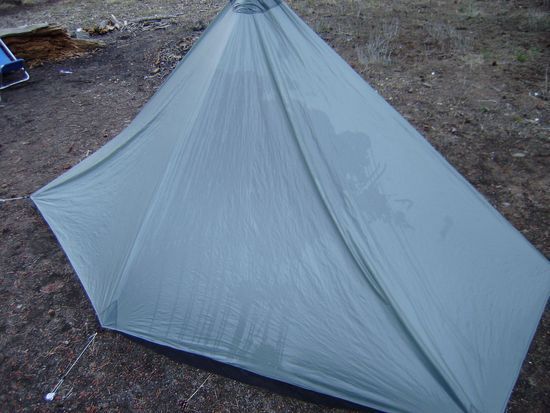
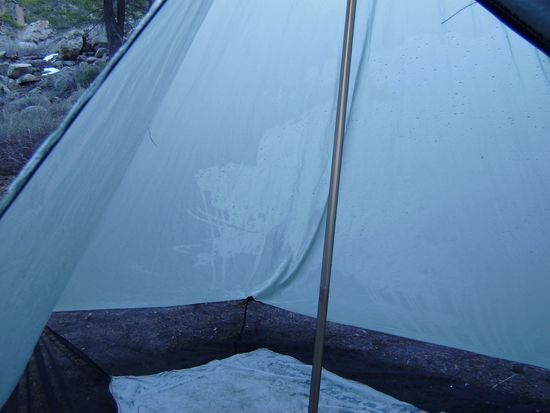
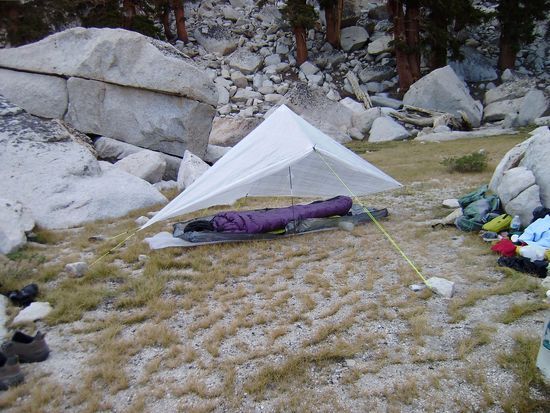
In his mind it was same-same, I see a different location,different night, different design (note the bug net on the sil and the height off the ground in the Cuben)
Pitch two identical tents , one in silnylon and another in Cuben, side by side and i bet you will get a very similar result re condensation.
For example , this is a comment from BPL
"As a counter point, I experienced plenty condensation with a cuben Duomid. Used an Oooknest inner too, essentially turning the Duomid into a double walled shelter. I'd say the temperature during the day was about 65 degrees, dropping to 40 (or a little less) at night. Humidity was generally pretty high (this being Norway)."
now in the same thread another user posted these two photos as proof that silnylon is worst :



In his mind it was same-same, I see a different location,different night, different design (note the bug net on the sil and the height off the ground in the Cuben)
- Franco
- Lagarostrobos franklinii

- Posts: 2958
- Joined: Thu 30 Oct, 2008 6:48 pm
- Region: Victoria
- Gender: Male
Re: Tent condensation
Gadgetgeek wrote:nylon does have some affinity for water, and condensation requires something to condense onto, so it could be that nylon permits a higher level of nucleation (like a dirty glass makes more bubbles) but i may have my physics wrong.... Since until recently there were few options for tent material, just differing coatings it would be hard to tell if that was the case. I wonder if nylon is more prone to condensation, or if the other materials shed the tiny bit of water more freely in some way. just like some materials can feel dryier or wetter even when they contain the same amount of water.
It is far from scientific or conclusive, but my impressions are my cuben tarp attracts much less condensation than my silnylon tarp when used over a hammock. And yes, it can be so humid and still up here that an A-shaped tarp with the lowest edges 1m off the ground still gets lots of condensation.
Agree with the hi-lo venting for tents, but some conditions it is just not going to be enough. Solid inners with DWR treatment are the way to go.
-
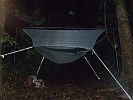
nq111 - Phyllocladus aspleniifolius

- Posts: 949
- Joined: Mon 07 Mar, 2011 8:27 pm
- Region: Queensland
Re: Tent condensation
nq111 wrote:Solid inners with DWR treatment are the way to go.
The main effect of this is not that it reduces the amount of condensation but rather that it helps stop it getting into the inner tent and onto the occupants and their gear.
"Perfection is attained not when there is nothing more to add, but when there is nothing more to remove".
-

Mark F - Lagarostrobos franklinii

- Posts: 2332
- Joined: Mon 19 Sep, 2011 8:14 pm
- Region: Australian Capital Territory
- Gender: Male
Re: Tent condensation
Lophophaps wrote:Tents suffer from condensation. How is condensation minimised? Most tents have a gap between the fly and the ground, and air can circulate, more so on windy nights. Would a high or side vent assist, leaving the door open, stopping breathing while asleep?
One of the ways that I've used to reduce condensation is to sleep with my head on the down wind end of the tent, the water vapour in your breath is more likely to get sucked out without forming condensation on the tent. Up the snow or in the Bush cold air flows down hill. So even on nights where there seems not a breath of wind, the cold air flows down hill, light a fire and watch the smoke if you don't believe me. Keeping this in mind, on still nights I set my tent up with my feet towards the Hill.
On these still nights if your tent allows it use the guys to pull the fly out to give it the most clearance off the ground as possible.
Doesn't get rid of all the condensation but this certainly minimizes it. My last snow tent was reported to have condensation issues, tunnel type, but using these principles I didn't really have a problem with it. The nights I had condensation everyone else did as well.
I haven't seen the cessation of breathing method work to great effect the next day. Though there's always a first time for it, maybe icefest has got some ideas for that one
Cheers Walkon
"I live in a very small house, but my windows look out on a very large world."
"I live in a very small house, but my windows look out on a very large world."
-

walkon - Phyllocladus aspleniifolius

- Posts: 803
- Joined: Sun 24 Nov, 2013 7:03 am
- Region: Victoria
- Gender: Male
Re: Tent condensation
walkon wrote:I haven't seen the cessation of breathing method work to great effect the next day. Though there's always a first time for it, maybe icefest has got some ideas for that one
Hahaha,
I'm not sure if it was here or on BPL, but I've had a debate on the possibility of using an anesthetic circuit open to the outside. That way you can remove moisture directly.
Men wanted for hazardous journey. Low wages, bitter cold, long hours of complete darkness. Safe return doubtful.
-

icefest - Lagarostrobos franklinii

- Posts: 4479
- Joined: Fri 27 May, 2011 11:19 pm
- Location: www.canyoninginvictoria.org
- Region: Victoria
Re: Tent condensation
Gadgetgeek wrote:nylon does have some affinity for water, and condensation requires something to condense onto, so it could be that nylon permits a higher level of nucleation (like a dirty glass makes more bubbles) but i may have my physics wrong.... Since until recently there were few options for tent material, just differing coatings it would be hard to tell if that was the case. I wonder if nylon is more prone to condensation, or if the other materials shed the tiny bit of water more freely in some way. just like some materials can feel dryier or wetter even when they contain the same amount of water.
That's an interesting thought. I don't think the degree to which nylon is hygroscopic matters as much as the irregularities on the surface. If I'm right about that then there isn't likely going to be a huge difference, if any, between commonly used tent materials.
I have slept in tents made from urethane coated nylon, urethane coated polyester, silicone impregnated nylon, polyethylene sheets, and Cuben fiber, as well as various versions of laminated breathable fabrics (most of which included a fuzzy inside layer to promote moisture transport). All of them, every single one, including the breathable fabrics, suffered significant condensation at one time or another. Maybe a tent constructed of clean, highly polished glass would reduce condensation to some degree, at least at first, but that's just a wild guess.
I think you'd have more luck using a snorkel.
- Orion
- Athrotaxis selaginoides

- Posts: 1963
- Joined: Mon 02 Feb, 2009 12:33 pm
- Region: Other Country
Re: Tent condensation
Mark F wrote:nq111 wrote:Solid inners with DWR treatment are the way to go.
The main effect of this is not that it reduces the amount of condensation but rather that it helps stop it getting into the inner tent and onto the occupants and their gear.
Exactly right.
-

nq111 - Phyllocladus aspleniifolius

- Posts: 949
- Joined: Mon 07 Mar, 2011 8:27 pm
- Region: Queensland
Re: Tent condensation
icefest wrote:walkon wrote:I haven't seen the cessation of breathing method work to great effect the next day. Though there's always a first time for it, maybe icefest has got some ideas for that one
Hahaha,
I'm not sure if it was here or on BPL, but I've had a debate on the possibility of using an anesthetic circuit open to the outside. That way you can remove moisture directly.
But you still have the moisture coming out of your skin, plus whatever clothes are drying, plus whatever evaporates from the ground (as a good winter tent is often a fair bit warmer, particularly when the stove is going, then outside).
Fair to say, whatever you do, condensation happens!
-

nq111 - Phyllocladus aspleniifolius

- Posts: 949
- Joined: Mon 07 Mar, 2011 8:27 pm
- Region: Queensland
Re: Tent condensation
A snorkel with a air intake on the inside of the sleeping bag and an outlet on the outside of the tent would help considerably.
You would have active removal of the moist air, and as you warm up the new air you'll decrease the relative humidity and increase your ability to dry more clothes.
You just need to make sure that the exhaust doesn't freeze in winter.
You would have active removal of the moist air, and as you warm up the new air you'll decrease the relative humidity and increase your ability to dry more clothes.
You just need to make sure that the exhaust doesn't freeze in winter.
Men wanted for hazardous journey. Low wages, bitter cold, long hours of complete darkness. Safe return doubtful.
-

icefest - Lagarostrobos franklinii

- Posts: 4479
- Joined: Fri 27 May, 2011 11:19 pm
- Location: www.canyoninginvictoria.org
- Region: Victoria
-

photohiker - Lagarostrobos franklinii

- Posts: 3130
- Joined: Sun 17 May, 2009 12:31 pm
- Location: Adelaide, dreaming up where to go next.
Re: Tent condensation
photohiker wrote:Add a heat recovery ventilation system for winter:)
It would be very hard to prevent icing while still having decent heat recovery. I think the benefit of decreased condensation will outweigh the rate of heat loss due to breathing in the cold air.
Men wanted for hazardous journey. Low wages, bitter cold, long hours of complete darkness. Safe return doubtful.
-

icefest - Lagarostrobos franklinii

- Posts: 4479
- Joined: Fri 27 May, 2011 11:19 pm
- Location: www.canyoninginvictoria.org
- Region: Victoria
Re: Tent condensation
Do what they do in Europe. Run the incoming air through a ground pipe before the heat exchanger - this raises the incoming air temps above freezing, condensation then doesn't freeze.
Should be easy to do in camp
Should be easy to do in camp
Michael
-

photohiker - Lagarostrobos franklinii

- Posts: 3130
- Joined: Sun 17 May, 2009 12:31 pm
- Location: Adelaide, dreaming up where to go next.
Re: Tent condensation
No one solution for condensation. A multiple layered defence is required - vent, wipe, cover ground and use solid ceilings on inners.
While a tarp or tent fly shelter may be able to retain heat, that is not its primary goal - which is to keep the occupants dry.
Secondary is reducing windchill and perhaps UV protection in some situations.
Solid inners can cut down on windchill and fully sealable inners will retain warm air and whatever moisture it contains.
Exhaled air is completely saturated with water.
You can breathe out between 7 and 20ml/hr of water, depending on temperature and humidity. (More water loss when it is colder and lower humidity)
Increased heart rate multiplies the loss of water quadratically, so at 140bpm it may be 60ml/hr loss.
http://www.ncbi.nlm.nih.gov/pubmed/22714078
So that makes for about 60-160ml of water vapour breathed out per person per 8 hours rest.
The moisture load of a tent's interior air volume thus builds with exhalation, clothes drying and dampness of the ground and declines with ventilation.
Even a solid inner can get coated -inside- with hoar frost if it gets cold enough. Just wipe it off and dump it outside.
Condensation reduction strategies are:
Open the shelter's top vent, do not seal fly to ground but leave room for air flow.
Do not seal sold inners.
Cover bare ground under the fly with a groundsheet.
Wiping down fly (from inside an inner is not always easy) or the inside of the inner.
Don't dry clothes inside tent or suffer the consequences.
People say they dry socks by putting them in their sleeping bags.
I reckon this just transfers moisture, pong and mold to the sleeping bag, which will become noticeable after a few days unless the bag gets aired and dried.
There is then a case that all mesh inners should have a solid fabric ceiling as a point of final defence from condensation dripping from fly.
Unless you like waking to a cold shower.
If your tent does not have a top vent (e.g. early model Moondance) then leaving a door open may help.
Tarptent offer a ceiling attachment for the Rainbows for just this purpose.
The solid inners for the Stratospires have a solid roof, but not the Notch. Wish it did. At least it has top vents.
While a tarp or tent fly shelter may be able to retain heat, that is not its primary goal - which is to keep the occupants dry.
Secondary is reducing windchill and perhaps UV protection in some situations.
Solid inners can cut down on windchill and fully sealable inners will retain warm air and whatever moisture it contains.
Exhaled air is completely saturated with water.
You can breathe out between 7 and 20ml/hr of water, depending on temperature and humidity. (More water loss when it is colder and lower humidity)
Increased heart rate multiplies the loss of water quadratically, so at 140bpm it may be 60ml/hr loss.
http://www.ncbi.nlm.nih.gov/pubmed/22714078
So that makes for about 60-160ml of water vapour breathed out per person per 8 hours rest.
The moisture load of a tent's interior air volume thus builds with exhalation, clothes drying and dampness of the ground and declines with ventilation.
Even a solid inner can get coated -inside- with hoar frost if it gets cold enough. Just wipe it off and dump it outside.
Condensation reduction strategies are:
Open the shelter's top vent, do not seal fly to ground but leave room for air flow.
Do not seal sold inners.
Cover bare ground under the fly with a groundsheet.
Wiping down fly (from inside an inner is not always easy) or the inside of the inner.
Don't dry clothes inside tent or suffer the consequences.
People say they dry socks by putting them in their sleeping bags.
I reckon this just transfers moisture, pong and mold to the sleeping bag, which will become noticeable after a few days unless the bag gets aired and dried.
There is then a case that all mesh inners should have a solid fabric ceiling as a point of final defence from condensation dripping from fly.
Unless you like waking to a cold shower.
If your tent does not have a top vent (e.g. early model Moondance) then leaving a door open may help.
Tarptent offer a ceiling attachment for the Rainbows for just this purpose.
The solid inners for the Stratospires have a solid roof, but not the Notch. Wish it did. At least it has top vents.
-

Avatar - Athrotaxis cupressoides

- Posts: 279
- Joined: Sun 07 Jul, 2013 5:21 pm
- Location: NE Melbourne
- Region: Victoria
Re: Tent condensation
Thank you all for a most illuminating discussion. There's a lot of good ideas. Another way of stopping tent condensation is to use Higher Utility Tent, or HUT.
-

Lophophaps - Auctorita modica

- Posts: 3382
- Joined: Wed 09 Nov, 2011 9:45 am
- Region: Victoria
- Gender: Male
Re: Tent condensation
By going the HUT way you might swap condensation for condescension.
- Franco
- Lagarostrobos franklinii

- Posts: 2958
- Joined: Thu 30 Oct, 2008 6:48 pm
- Region: Victoria
- Gender: Male
Re: Tent condensation
Franco wrote:By going the HUT way you might swap condensation for condescension.
LOL. there still may be drips.
-

Lophophaps - Auctorita modica

- Posts: 3382
- Joined: Wed 09 Nov, 2011 9:45 am
- Region: Victoria
- Gender: Male
Re: Tent condensation
Condensation you wipe
condescension you swipe
condescension you swipe
- Franco
- Lagarostrobos franklinii

- Posts: 2958
- Joined: Thu 30 Oct, 2008 6:48 pm
- Region: Victoria
- Gender: Male
Re: Tent condensation
High/low venting and airflow is the key.
Also a clever design can lead internal condensation to drip outside the tent by running down the internal roof slope to a point where it must drip through the side vents to the exterior of the tent. (bag in picture is tent bag which becomes internal storage pocket)
Also a clever design can lead internal condensation to drip outside the tent by running down the internal roof slope to a point where it must drip through the side vents to the exterior of the tent. (bag in picture is tent bag which becomes internal storage pocket)
The most valuable items in your hiking kit are knowledge, experience, and improvisation.
Everything else is luxury.
Everything else is luxury.
-

ElvenCraft Gear - Nothofagus gunnii

- Posts: 21
- Joined: Sat 22 Nov, 2014 10:23 am
- ASSOCIATED ORGANISATIONS: Elvencraft Wilderness Gear
- Region: New South Wales
- Gender: Male
30 posts
• Page 1 of 1
Who is online
Users browsing this forum: No registered users and 46 guests
